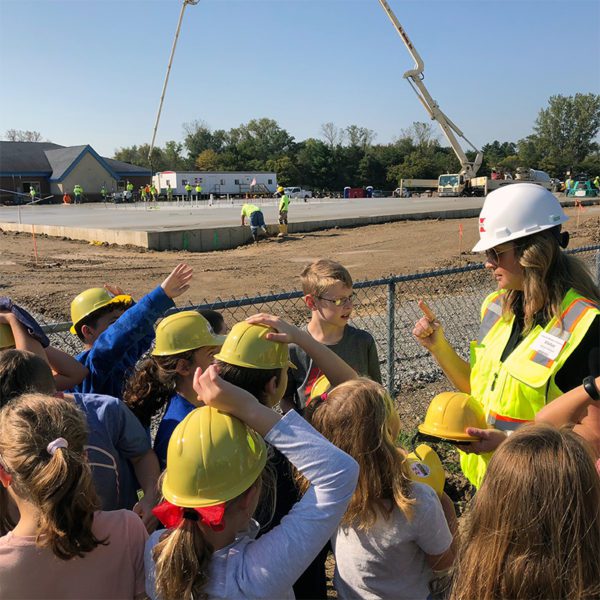Improved learning environments are underway at Lafayette Meadows Elementary School (LMES) in Roanoke, Indiana. The expansion and renovation project includes a 12-room addition, expansions to the kindergarten rooms and cafeteria, an auxiliary gym addition, and renovations in classrooms and the media center. Whether with team members, staff and board members, or the students themselves, The Hagerman Group (Hagerman) has prioritized communication while building the future of this elementary school.
Making the grade: Keys to success for one project with two delivery methods
The Lafayette Meadows Elementary expansion and renovation is unique in that it uses two project delivery methods— Construction Manager as Constructor (CMc), led by Hagerman, and progressive design-build for the mechanical/electrical/plumbing (MEP) portion, led by Performance Services Inc.
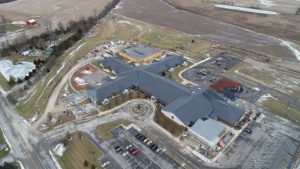
“The approach allowed us to have more construction professionals sitting at the table to collaborate and address issues with their expertise,” said Jim Coplen, business manager for Southwest Allen County Schools.“We’re seeing that benefit in terms of communication and cooperation between the different sides of the project.”
Southwest Allen County Schools has a significant high school project planned within the next two years, and leadership knew they wanted to use the two delivery methods on that project. The LMES project allowed them to test drive the concept on a smaller scale.
Once Hagerman was awarded the CMc contract, they quickly established a schedule of weekly meetings with Jim, representatives from Performance Services and members of the design team, so that collaboration could begin early and occur often.
“Any time a contractor is working in a school with students attending, we have to work through schedules, understand when materials are coming in, and take advantage of opportunities that might pop up,” Jim said. “Hagerman has done a good job with this, communicating with our principal to understand what’s happening at the school.”
“As an administrator, it has been fun to be part of this process and to work alongside Hagerman every step of the way to focus on what is best for the kids,” said Jenny Fedele, principal at Lafayette Meadows Elementary School.“They seem very kid-oriented in the questions they’re asking, and very interested in getting input from us, from me to our custodians and head of building maintenance.”
Construction projects at operating schools require extensive coordination, and the dual delivery method added another layer. Regular meetings were important, from initial conversations to establish scope and parameters to ongoing discussions about the schedule and planning for school activities. In addition, Hagerman introduced the team to Procore, a web-based project management tool that enhanced communication for all project team members.
“With two different contracts, it’s important that you understand exactly who is doing what,” said Dodd Kattman, AIA, LEED AP, principal, MKM architecture + design, architect-of-record for the LMES project. “Any construction delivery process works well if all of the parties are looking out for the owner’s best interest.”
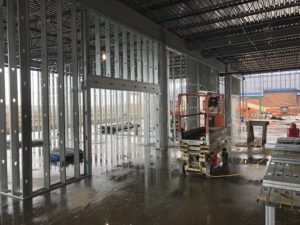
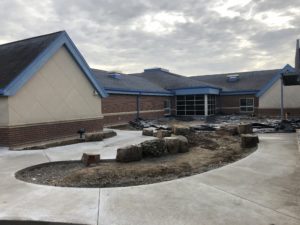
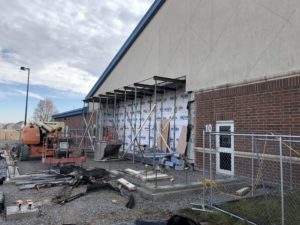
A foundation of positive relationships also contributed to the project process. Jay Wilhelm, project executive at Hagerman, and Glen Smith, project manager at Performance Services, had experience working together at a previous company. “Hagerman also has great relationships with all of the subcontractors Performance Services selected, so that was a big help to hit the ground running,” Jay said. In addition, MKM had experience working with both contractors.
“Jay Wilhelm and I have similar management styles,” Glen said. “This made the collaboration at LMES a natural fit for both of us. We became good friends at our previous firm and stayed in touch, so I was excited to be able to work with him again on this project. I have also worked side-by-side with Derrick Keener, site superintendent. This added another layer of positive collaboration to the project. Relationships matter, and the existing relationships brought to this team have made a difference. We enjoy working together and look forward to delivering an excellent project.”
“The district chose project delivery methods that engage the builder early in the process, which helps increase the level of communication among disciplines,” said Brad Smith, executive vice president, Hagerman, Inc.
“All team members walked into this project with an open mind on how to best work together to deliver a successful project for Southwest Allen County Schools,” Glen said. “Meetings are collaborative in nature, even with differing project delivery methods. Jim Coplen does an excellent job in setting the tone and encouraging teamwork. Walt Todd, director of maintenance for Southwest Allen County Schools; Jim; and all of the team members have been great to work with. We all have the end goal of delivering a quality project and a satisfied customer, and it makes the project run very smoothly.”
The project has given the district the confidence to use this approach for its upcoming high school project.
“This being the first time, we’ve learned some things and benefitted from the process,” Jim said. “I appreciate the level of communication the team has provided. The experience has been great.”
Knowing the material: Keeping the board and the community informed
In addition to prioritizing collaboration between team members, the Lafayette Meadows Elementary School project places importance on communicating with the community.
At each of the district’s bi-weekly board meetings, Hagerman provides a quick construction update that includes an executive report of key milestones and photos, along with a video of drone footage from the job site.
According to Jay, from the regular updates to the careful phasing of construction activities, Hagerman has focused on making the project a positive experience for everyone involved.
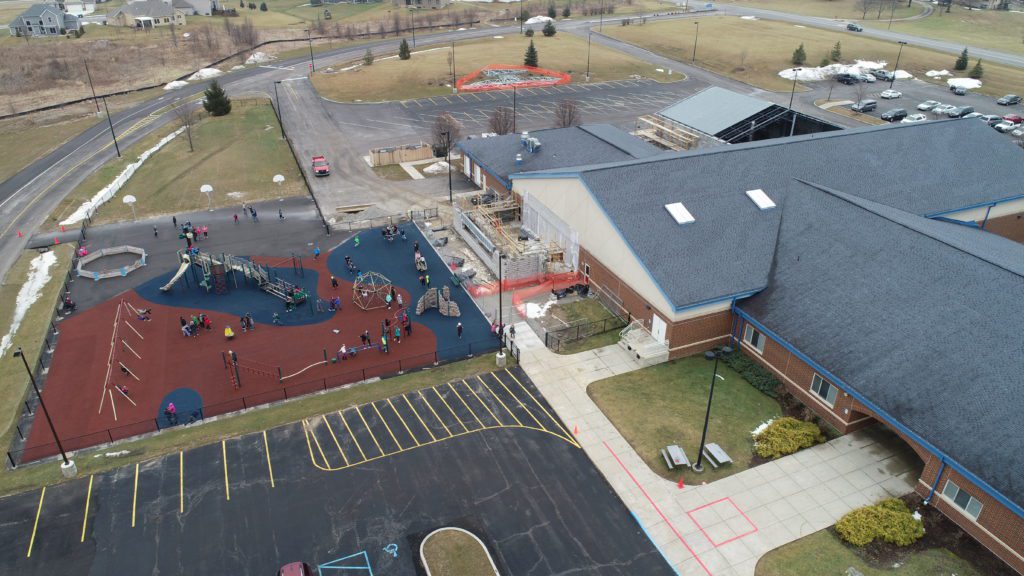
“We wanted to help board members, staff, and teachers experience the project beyond looking at photos, schedules, or a written report.” Jay said. “The drone footage gives everyone a bird’s eye view of the project, so they see how it’s coming together. It’s neat to see the excitement growing every time we prepare and present an update.”
“The school board members appreciate the updates and being informed,” Jim said. “If someone in the community asks them about the project, they can speak intelligently about the process.”
The school district also uses the drone footage and information to create progress videos shared on social media.
“The pieces of communication, whether a PDF of the weekly update or the biweekly drone footage, have enabled us to take our entire community along this journey,” said Stacey Fleming, director of district communications, Southwest Allen County Schools. “As we continue to grow as a district and look to future construction projects, this allows our SACS family to feel like they are part of the district and can get as involved as they want. It’s provided us the technology and footage we wouldn’t otherwise have and allows us to tell the story and engage our community in this building process.”
Teachable moments: Engaging the next generation
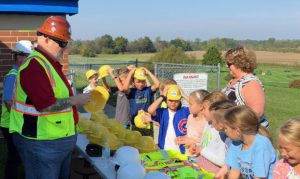
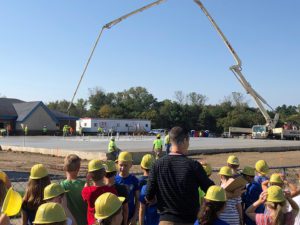 The project’s focus on communication even extends to the districts’ youngest stakeholders—the students. The Hagerman Group’s Little Hardhats program provided an experience for the school’s 600 students to learn more about the construction process firsthand.
The project’s focus on communication even extends to the districts’ youngest stakeholders—the students. The Hagerman Group’s Little Hardhats program provided an experience for the school’s 600 students to learn more about the construction process firsthand.
“The project is affecting their campus, and they’re understandably interested in what we’re doing, so it was a great opportunity to teach them about construction,” said Sarah Walker, director of The Hagerman Institute of Learning, a dedicated educational and training platform. The Hagerman Institute provides educational fulfillment and best practices training for Hagerman’s internal talent while embracing opportunities to engage with clients and the community, including students of school projects like LMES.
Hagerman arranged the Little Hardhats program to occur during a concrete pour for the 12-room addition. Students were divided into groups, and in line with the “safety first” philosophy, each group’s experience started with a safety presentation about personal protective equipment (PPE), and each student received a plastic hardhat to take home. They then watched part of the concrete pouring and finishing process while Hagerman team members explained what was occurring and discussed responsibilities of the trades people, the purpose of the equipment, and safety considerations.
“It was great to witness the kids focused, engaged, and excited to see and learn what was happening,” Jay said. “Some of the students’ parents work in the building trades, so the kids could relate it to their experiences. One parent told us that her child came home that day, pulled their little hardhat out of their backpack, and talked about the experience all night. That proved to us that the experience got them interested in the world of construction.”
After the concrete pour, LMES students participated in a school-wide assembly to learn the science behind concrete, participate in a game about construction, and hear more about trade careers.
“We also talked about how we work on a team, that each role is critical to making the project happen, and how important it is to be a good team player,” Sarah said.
“The assembly also allowed us to talk about other roles involved in design and construction, including the architect, engineer and management roles,” Jay added. “There are a lot of career paths they can pursue.”
Brad pointed out the importance of these programs given the need for talent in the construction industry.
“The programs we’re implementing at The Hagerman Institute allow us to walk the talk and get kids engaged in construction at a young age,” Brad said.
“Little Hardhats was an excellent program,” Jenny said. “Giving the studen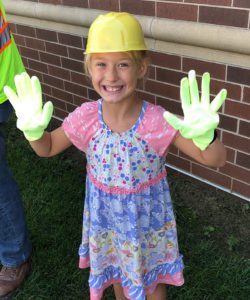 ts a hands-on experience did two things—it piqued their interest of what construction means, and it also helped them focus by quenching their curiosity of what’s going on outside of the classroom.”
ts a hands-on experience did two things—it piqued their interest of what construction means, and it also helped them focus by quenching their curiosity of what’s going on outside of the classroom.”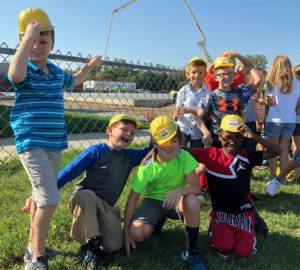
Jenny said the program has also created a continual opportunity to engage the students in the project. “Teachers can take the students to a window and point out the activity taking place outside or look something up on the computer if a student has a question,” she said. “Our hope is that there’s a young boy or girl who might get interested in construction. This experience has given them another example of what it’d be like to work in their community.”
Stacey pointed out that the experience gave the kids ownership and excitement about their school. “We’ve also incorporated it into science lessons and talked about career paths in construction,” she said. “Parents have reached out and said, ‘thank you for introducing my kids to the trades and making them a part of this construction project.’ It’s important that it didn’t just impact kids; the community really embraced the whole project.”
Project Team Members, Little Hardhats Program Participants, and Sources:
- Phil Downs, Superintendent, Southwest Allen County Schools
- Jim Coplen, Business Manager, Southwest Allen County Schools
- Walt Todd, Director of Maintenance, Southwest Allen County Schools
- Jenny Fedele, Principal, Lafayette Meadows Elementary School
- Stacey Fleming, Director of District Communications, Southwest Allen County Schools
- Chris Harmon, Director of Field Operations, Hagerman, Inc.
- Derrick Keener, Project Superintendent, Hagerman, Inc.
- Shawn Reader, Safety Manager, Hagerman, Inc.
- Brad Smith, Executive Vice President, Hagerman, Inc.
- Sarah Walker, Director, The Hagerman Institute of Learning
- Jay Wilhelm, Project Executive, Hagerman, Inc.
- Rob Young, Vice President of Business Development, Hagerman, Inc.
- Stephanie Veit, Business Development Manager, Hagerman, Inc.
- Jesse Carmody, Project Engineer, Hagerman, Inc.
- Glen Smith, Project Manager, Performance Services
- Dodd Kattman, AIA, LEED AP, Principal-in-Charge, MKM architecture + design
- Ben McHugh, LEED Green Associate, Associate, Project Architect, MKM architecture + design

